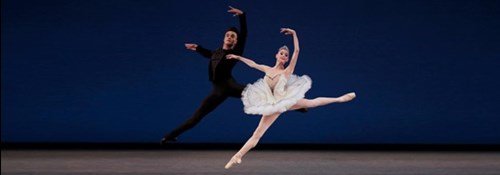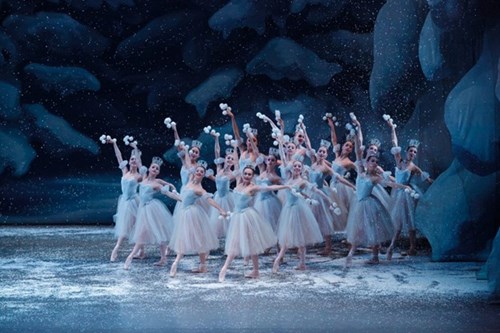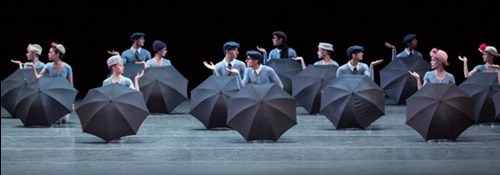
At the heart of a city that never sleeps, the New York City Ballet (NYCB) stands as a beacon for dance enthusiasts and art connoisseurs alike. Since its inception in 1948, the NYCB has played a pivotal role in defining the landscape of contemporary ballet, not just within the confines of Manhattan but across the globe. As a premier dance company, it's renowned for its remarkable athleticism, compelling storytelling, and the innovative vision of its founding choreographers, George Balanchine and Lincoln Kirstein. This blog post intends to take you on a mesmerizing journey, spinning through history, to explore how the NYCB has indelibly revolutionized the world of dance. We will dive into the company's trailblazing approach to ballet, its commitment to nurturing new talent, and the profound impact of its groundbreaking performances. We'll also highlight the influential figures who've contributed to its enduring legacy. So, prepare to pirouette through time as we unravel the fascinating tale of the New York City Ballet's transformation from a small company to a global powerhouse that continues to shape and inspire the dance world.
The foundation for the New York City Ballet was laid with the establishment of the School of American Ballet in 1934. Visionaries George Balanchine, a Georgian choreographer, and Lincoln Kirstein, an American cultural figure, collaborated to create a ballet school that would cultivate superbly trained, uniquely American dancers. This school served as an incubator for talent, from which Kirstein and Balanchine hand-picked dancers for their performances.
In 1948, NYCB was born out of a shared dream between Balanchine and Kirstein to create a ballet company that would rival the prominence of European counterparts, yet retain a distinctive American flavor. Balanchine, with his profound understanding of classical ballet and ability to infuse it with a modern sensibility, became the company's founding ballet master. Kirstein, with his unwavering belief in the power of art to enrich society, served as the company's general director. Together, they shaped NYCB into an institution that pushed the boundaries of traditional ballet.

George Balanchine, recognized as one of the 20th century's most prolific choreographers, revolutionized ballet with his distinctive choreographic style. He challenged the norms of classical ballet by emphasizing speed, energy, and the primacy of dance over storytelling. His choreography wasn't confined to the narrative structures that dominated ballet; instead, he utilized the music as his muse, creating kinetic patterns and abstract movements that mirrored the melodies.
Balanchine's unique approach to ballet was characterized by a blend of classical purity and modern innovation. He introduced a new aesthetic that focused on the beauty of movement, highlighting the athleticism of the dancers and the physicality of the dance itself. This was a marked departure from the elaborate sets and costumes that were often the hallmarks of traditional ballet productions.
The impact of the collaboration between Balanchine and Kirstein extended far beyond the confines of the New York City Ballet. Their shared vision of a distinctly American ballet, marked by innovation and boldness, transformed the dance landscape. Their commitment to nurturing talent and fostering creativity allowed for the emergence of new choreographic voices, further enriching the world of ballet. The NYCB, under their leadership, became a beacon of innovation and a testament to the transformative power of dance.
The annals of the New York City Ballet's history are graced by several influential figures, each leaving an indelible mark on the company and the broader dance world. Apart from Balanchine, whose innovative choreography redefined ballet, Jerome Robbins also played a significant role in shaping NYCB's identity. Robbins, acclaimed both in ballet and Broadway, brought a unique narrative style to the company, complementing Balanchine's abstract approach. His works, like Fancy Free and Dances at a Gathering, are celebrated for their humanistic touch, creating a delicate balance between storytelling and technique.

These figures, along with a host of exceptional dancers like Suzanne Farrell, Edward Villella, and Maria Kowroski, significantly contributed to the company and the dance world. Their artistic contributions, ranging from choreographic innovations to remarkable performances, helped shape NYCB's illustrious history and further established it as a global leader in ballet. Their influence continues to resonate, inspiring generations of dancers and choreographers worldwide.
Today, the New York City Ballet continues to be a leading force in the dance world, upholding its legacy of innovation and excellence. It maintains an active seasonal repertoire of over 60 works, the largest in the United States, with performances that draw audiences from around the globe. The company's influence extends beyond its home at the David H. Koch Theater, as it regularly tours nationally and internationally, sharing its unique brand of ballet with a wider audience.
The company's roster, a blend of seasoned veterans and rising stars, is indicative of its commitment to nurturing talent. Principal dancers like Tyler Angle, Ashley Bauder, and Megan Fairchild embody the company's dedication to technical mastery and artistic expression. Renowned choreographers like Justin Peck, a former soloist and the current Resident Choreographer, are creating vibrant new works that push the boundaries of ballet.
NYCB's most popular current shows are a mix of classics and new creations. Balanchine's The Four Temperaments continues to enchant audiences with its timeless charm. Meanwhile, newer works like Peck's The Times Are Racing showcase the company's innovative spirit, ensuring that the New York City Ballet remains at the forefront of the dance world, spinning through history and into the future.
The New York City Ballet's odyssey from a small company to a vanguard of the dance world is a testament to its relentless innovation, commitment to excellence, and the visionary leadership of figures like George Balanchine and Lincoln Kirstein. Its revolutionary approach to ballet, characterized by a unique blend of classical technique and modern sensibility, has left a lasting mark on both ballet and Broadway. The company's influence extends far beyond the stage, shaping the artistic landscape and inspiring generations of dancers and choreographers worldwide.
Experiencing a NYCB performance is a captivating journey through the evolution of ballet, where tradition meets innovation in a breathtaking display of athleticism and artistry. Whether it's the timeless charm of one of Balanchine's works or the contemporary energy of Justin Peck's choreography, each performance offers a glimpse into the company's rich history and its continuous exploration of the limitless potential of dance. So, immerse yourself in a NYCB performance. Witness firsthand the magic that unfolds when the curtains rise, the lights dim, and the dancers take the stage - a magic that has been spinning through history and continues to redefine the dance world.

